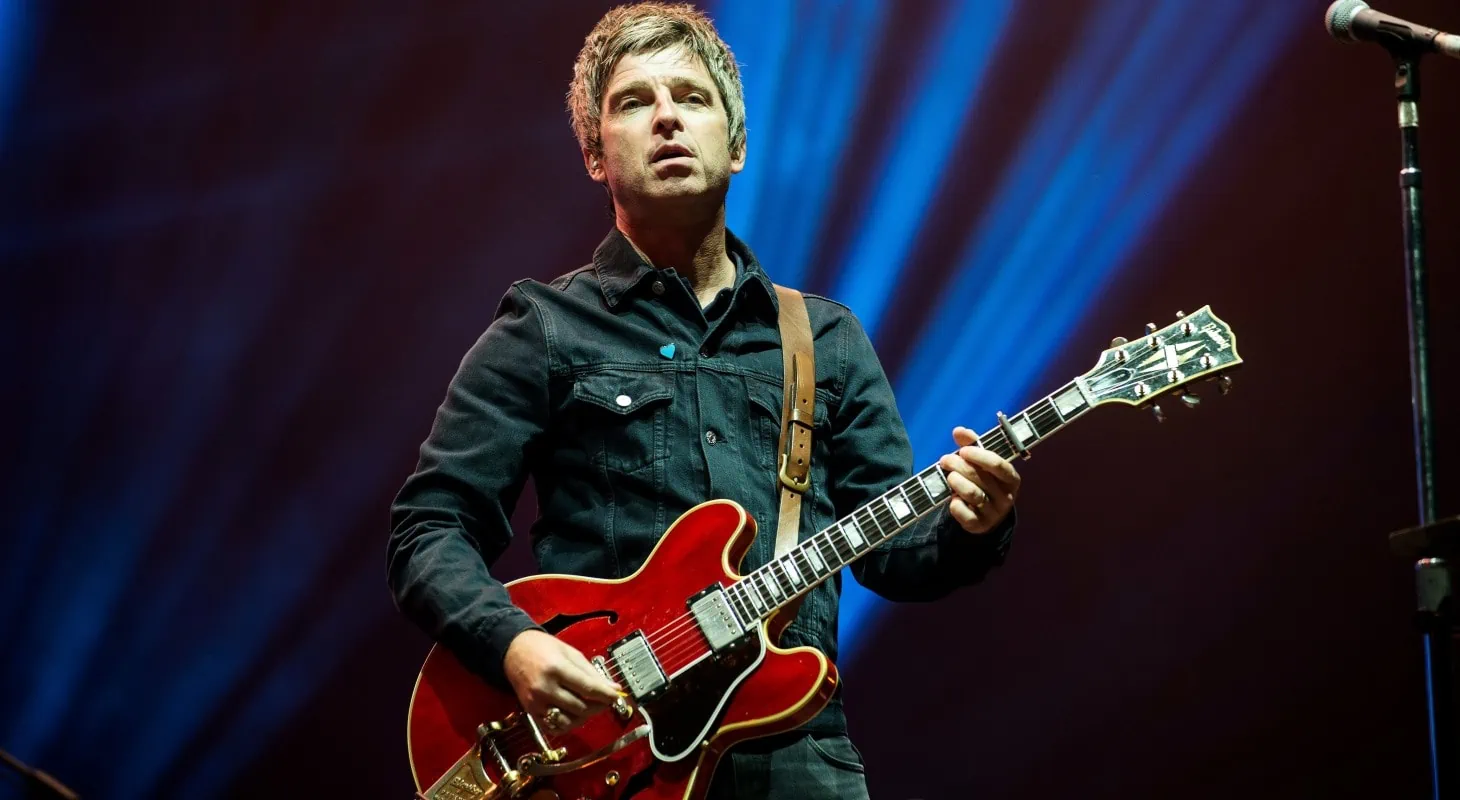I’ve been a huge Oasis fan for years. Long before “Wonderwall” was an internet meme, I, along with thousands of other teenagers, declared Noel Gallagher the greatest songwriter since Lennon & McCartney, and listened to the first two Oasis albums, back to back, on every road trip and walk home.
Noel Gallagher’s playing style and tone has always been genius in its simplicity, and highly effective for that reason. If you, like me, want to work out how to sound like Noel Gallagher, particularly in the Definitely Maybe and What’s the Story, Morning Glory eras, you’ve come to the right place.
I’ve based the below recommendations on the guitar sounds from those two albums and the recently released live recording of the band’s historic performance at Knebworth.
Table of Contents
Noel Gallagher Guitars

To my ear, there are a few distinct “peak” eras of Oasis. Their earlier sound is far more distorted and raucous, made with cheap guitars and Marshall stacks.
As the money started rolling in from the band’s meteoric early success, Noel Gallagher could afford nicer guitars, and the band’s guitar tones became more refined.
Then, of course, there’s Noel’s ongoing love of acoustic playing.
In the early days, Noel Gallagher played a cheap Epiphone Les Paul Standard. This guitar was used to record much of Definitely Maybe and extensively in early live performances.
It wasn’t long before The Smiths’ Johnny Marr lent Noel a very expensive mid-50s Black Beauty Les Paul Custom, which Noel promptly wrapped around the head of a stage invader. In response, Marr sent Gallagher a 1970s Les Paul Custom, with more weight to it, in case of another stage invasion.
There isn’t a huge difference in tone between these guitars, given the tremendous amount of distortion Noel Gallagher used on stage in those days.
It’s a big step up in pricing, but the Gibson Les Paul Standard is called the Standard for a reason. Noel Gallagher used Gibson Les Pauls for years before switching to hollow bodies almost full-time. I’d recommend the Standard ‘50s model, as this is closest to the heavy mid-century models Gallagher favored, ideally in a sunburst or black finish as per Noel’s own preference.
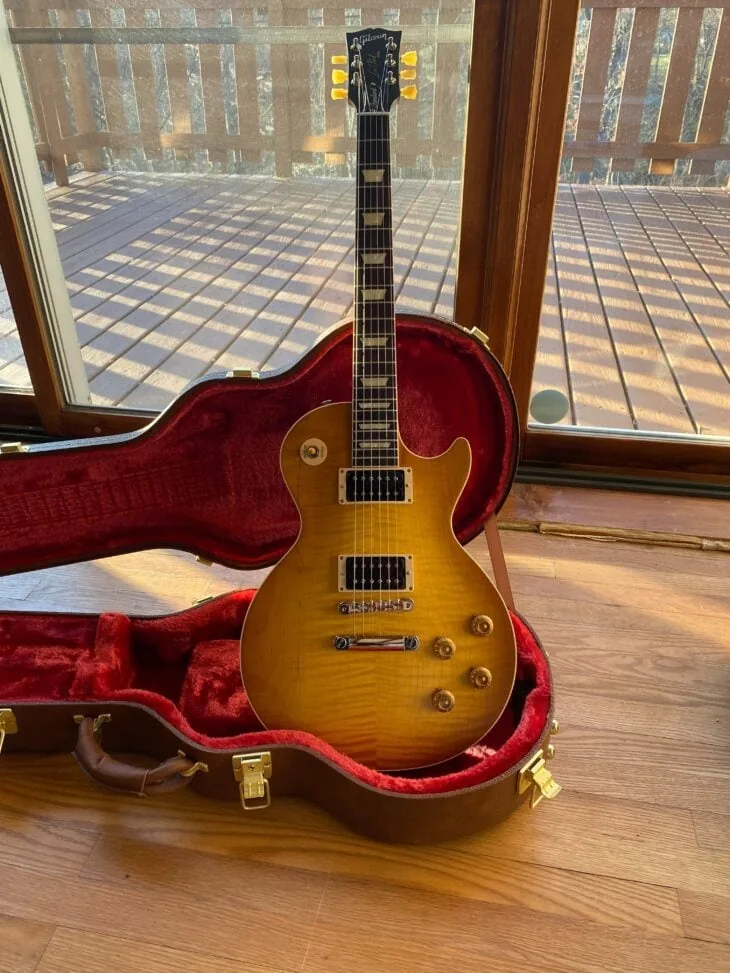
In other guitars, one of the most enduring images of the Britpop era is Noel Gallagher and his array of hollow-bodied guitars. One of the most famous was painted with a custom Union Jack finish.
One of the key sounds in the Oasis arsenal came courtesy of a Japanese-built Epiphone Riviera, as featured in the “Don’t Look Back in Anger” video. I’d recommend the Noel Gallagher signature model in wine red for the Oasis tone and look.
Noel later became heavily associated with a big red Gibson 355, but those guitars aren’t exactly easy to come by. If you prefer the look of a red hollowbody, the Epiphone 335 is an excellent instrument.
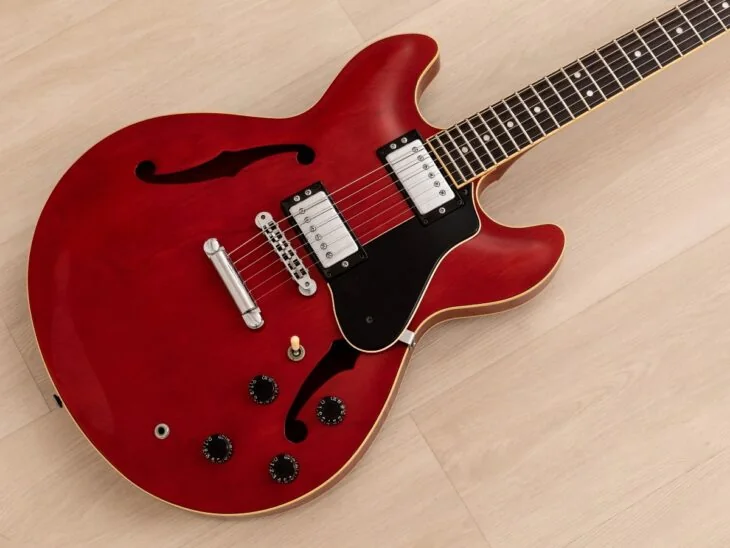
If you’re looking to emulate some of Noel Gallagher’s acoustic sounds, look no further than the Epiphone J45, a near-exact copy of the guitar he used to record “Wonderwall” and “Married With Children.”
In my opinion, the wine red Epiphone Riviera is the Oasis guitar: it was used on all the rhythm tracks for recording What’s The Story, Morning Glory. Noel also wrote “Don’t Look Back in Anger” and “Champagne Supernova” on this guitar. If you can get it, the Gallagher signature Riviera is probably the best guitar for this tone.
Oasis Amps
Noel Gallagher’s early sound came from a simple if unorthodox setup.
He ran a Roland Space Echo into a Marshall combo and ran the Marshall into a Vox AC30.
Gallagher embraced the powerful British sound of Marshall distortion early on and leaned heavily into it as the band started gathering momentum, switching from his series of combo amps to full-power Marshall stacks in the mid-90s.
Gallagher used various Marshall amplifiers throughout Oasis’ heyday, most likely relying on whatever backline he could get. He dabbled in other big, British drive tones, such as those from Orange and Hiwatt, but to my ear the classic Oasis amp tone comes from a Marshall.
Ideally, you’d want to use a similar Marshall to Noel’s, such as the JCM900 stack he used in the mid-90s. However, if a 4×12 cab and 100-watt amp are too likely to bother your neighbors and your back muscles, I’d recommend the Marshall DSL40C combo, which aims to capture the two-channel Dual Super Lead sound in a smaller box.

Alternatively, for a closer emulation of the early Oasis live sound, you might consider running a Marshall-style preamp into a Vox AC30, or its younger brother, the AC15.
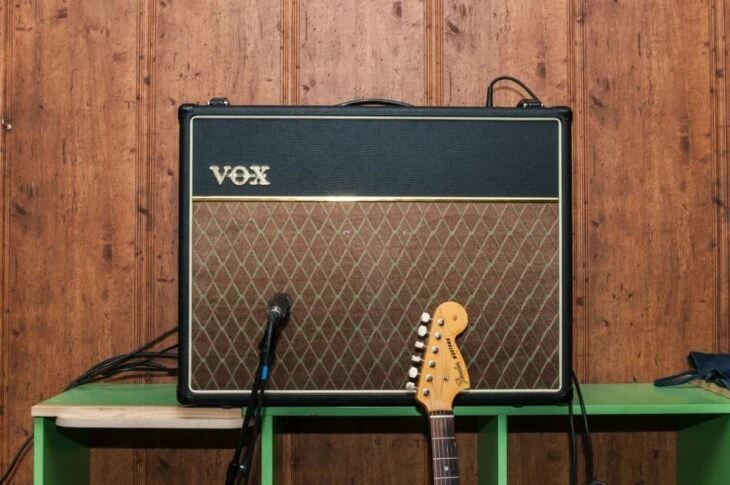
Oasis Amp Settings
Noel Gallagher boasted a few tones in his time, from the roaring, take-no-prisoners saturation of Definitely Maybe to the more restrained sounds of Morning Glory and the fuzzed-out insanity of Be Here Now.
I’ve identified a few key settings for certain Oasis hits, and outlined them below. I’ve based the Definitely Maybe sound on “Supersonic,” and the What’s The Story, Morning Glory sound on “Don’t Look Back in Anger.”
Supersonic Amp Settings
You can also use these settings for the sounds on Be Here Now.
Volume: 6
Your Marshall needs to be running nice and hot for this tone.
Gain: 8
Turn up your gain. Really let the amp hiss and sizzle.
Bass: 8-10
This is not an overly bassy sound. You don’t want the low end to cloud your distortion. However, your amp and guitar are naturally trebly, so we’re running this tone Hendrix-style, with all EQ knobs maxed out.
Mids: 8-10
There’s enough twang on the guitar to cover this.
Treble: 8-10
You may want to pull back on the treble for this sound, but not too much.
Don’t Look Back in Anger Amp Settings
Volume: 6
There is plenty of poweramp saturation that you only get by running your amp in the Marshall “sweet spot.”
Gain: 3-4
This is a much less distorted tone than on “Supersonic.”
Bass: 6-7
Let your guitar’s warmth do most of the work here.
Mids: 4
Slightly “scoop” your mids.
Treble: 5
Let your guitar’s natural twang do most of the treble work here. You want to avoid an overly bright or brittle sound.
Oasis Pedals
Noel Gallagher famously claims that the pedals he uses are “too numerous to go into.”
However, photos from the ’90s suggest that he was partial to two main effects: the Ibanez Tube Screamer, which Gallagher used to boost his signal for solos and delay.
Through the ’90s, Noel used the Ibanez TS9 Tube Screamer almost exclusively for overdrive.
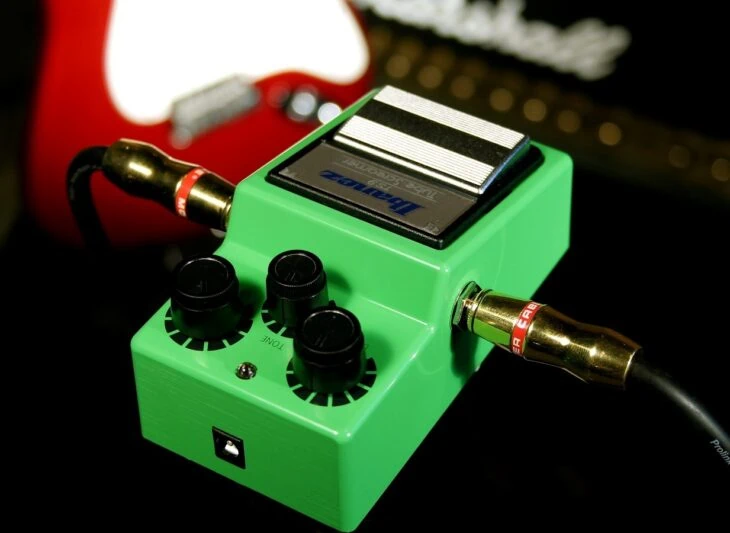
His echoey, delay-addled sound on Definitely Maybe came courtesy of the Space Echo, which is now available in pedal form.
If you’re choosing to run a clean amp like a Vox, you’ll need a Marshall-voiced drive pedal to push it into Oasis territory. The recently reissued Marshall Guvnor is probably the best ’90s-style Marshall tone in a box for this purpose.
Final Word
Although Noel himself would be the first to admit that most of his sound comes from his hands, his head, and his heart, you can get very close to the powerful, awe-inspiring tone of early Oasis with the right equipment.
A simple combination of Les Paul or Riviera, Marshall, and some drive and echo in your signal chain certainly won’t have you looking back in anger any time soon.

